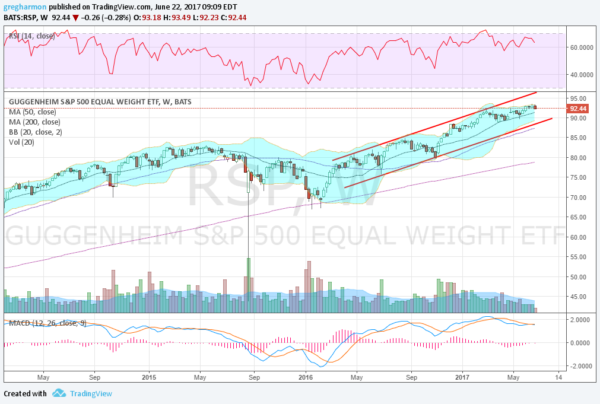It has been all the rage lately to discuss how a handful of stocks have been leading an index higher. Usually it's the S&P 500, a value-weighted index. In general, a market value weighted index is designed to have bigger companies do more of the the heavy lifting to move the index higher.
It has led to the creation of funny acronyms like FANG or FAMG or FAANG to describe the leaders. Some worry that if those leaders fail then the index will fall. It has been used to build a case for a lack of breadth. This rhetoric is nothing more than what we have seen since the bottom in the markets in 2009 — fear mongering. Data mining will always allow you to find the information you need to support your narrative. But come on, if you are looking to measure breadth, why look at a market cap-weighted index?

Instead, you can look at the S&P 500 on an equal-weight basis using the ETF, (NYSE:RSP), which consists of the same S&P 500 stocks with the same with equal weights given to each stock. When one rises and gets out of line with the others, it is sold down to a size to achieve equal weight again. Conversely, when one underperforms and falls in weight, it is bought. FANG or your favorite other acronym cannot play a role here long term.
What doe this chart show? A steady climb in the index on an equal weight since the market low in early 2016. Momentum remains strong and bullish. There is no disaster story here. And certainly no issue with the breadth. Steady as she goes, higher in the channel.
